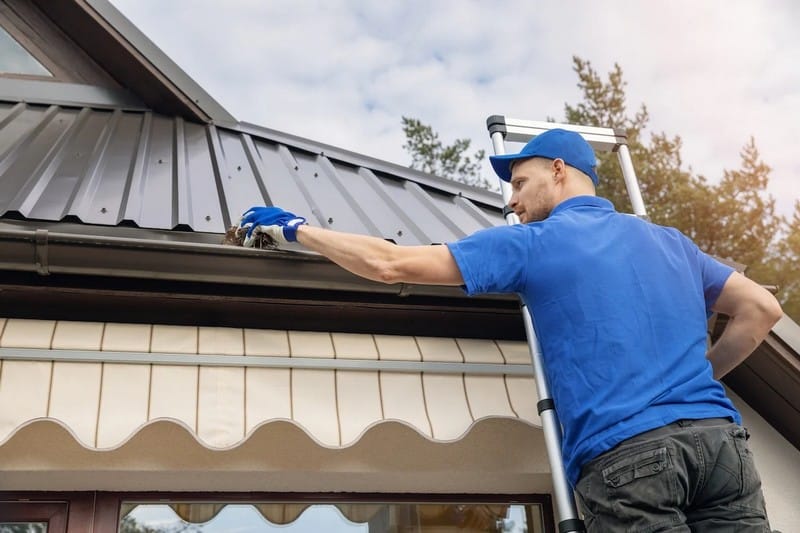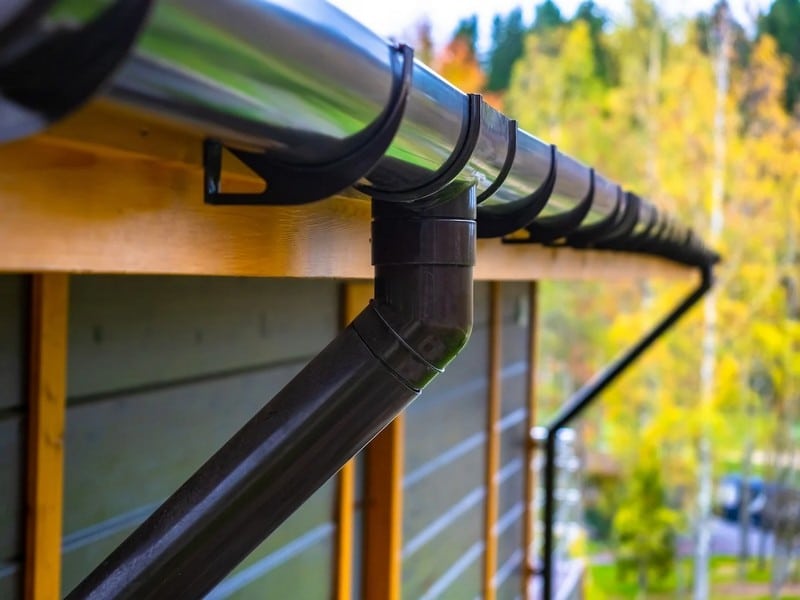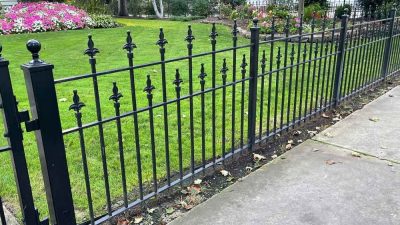
Whether your home has a metal or asphalt roof, gutters play a crucial role in protecting and rerouting rainwater away from it. Despite being an important addition to the roof, gutters still don’t get the attention they deserve. Many homeowners only think of their roof’s gutters when there’s a problem to rectify, and that might sometimes be too late and expensive.
Properly designed and maintained gutters are essential not just for water management, but also for the long-term health of a building. When rainwater isn’t guided away from the roof and foundation, it can seep into walls, weaken the structure, and even affect interior finishes. On homes with architectural detailing—overhangs, wooden fascia, or delicate plasterwork—water overflow can quickly cause visible damage. Functionally, gutters protect the integrity of a roof; aesthetically, they help preserve the clean lines and materials that define a house’s design.
Identifying and solving gutter problems early minimizes repair costs and avoids bigger, serious roofing problems. Here are a few common gutter problems you should be aware of and tips on how to fix them.
Sagging, Loose, or Damaged Gutters
Gutters can sag, become loose, or get damaged for several reasons, including hardware that has succumbed to the elements and deteriorated over time. These problems are mostly common on metal roofs because these roofs shed water more quickly than asphalt roofs. The high-speed runoff on metal roofs can easily overwhelm standard gutters that aren’t appropriately sized or securely mounted, causing them to become loose, sag, or get damaged.
The best solution for this problem is to first learn how to install gutters on metal roofs and ensure your gutters are fastened tightly on the roof. If the damage is extensive, you may need to replace the entire gutter system for effective performance.
When replacing, pay attention to materials and dimensions. Aluminum is lightweight and affordable, but it can dent easily under heavy snow or debris. Copper, while more expensive, offers durability and an elegant patina that complements traditional architecture. Galvanized steel and zinc are sturdy and long-lasting but require proper sealing to prevent corrosion. Choosing the right profile—K-style or half-round—also impacts how efficiently water is channeled away from the roof edge.
Leaking Gutters
It’s not always easy to spot a leaking gutter unless it’s a large hole that’s visible during sunny, dry weather. You can only easily spot leaks in your gutter if you take the time to intentionally inspect it for any leaks, especially after a storm. If leaking gutters are ignored for some time, they may end up eroding the underlying support and home foundation beneath the leak.
A small hole can often be sealed with roofing cement applied using a putty knife. Alternatively, you can buy a new gutter system and let professionals install it for you. This is often the case when the damage is too extensive to be sealed effectively.
While leaks are a common issue, clogging is even more frequent.
Clogged Downspouts and Gutters
Clogging is one of the most common problems with gutters and downspouts. When debris from trees or dust brought on the roof by wind accumulates in the gutters, it causes a clog during rainy weather, blocking the flow of water. This accumulated water will get backed up and often results in leaks and damage to the attic insulation and the foundation. The weight and buildup on the gutters can cause them to sag and even break away from the house.
To avoid all these, you should clean your gutters at least twice or once a year to get rid of debris and dead leaves. After a big storm, check if any debris, branches, or leaves have accumulated on your gutters and remove them immediately to prevent water from clogging there. Regularly maintaining and cleaning your gutters can protect them from consistent clogs, especially if your roof is close to many trees.
Beyond cleaning, consider preventive design choices. Installing leaf guards or mesh screens can dramatically reduce maintenance needs. For homes surrounded by dense vegetation, oversized downspouts allow water to pass even if some debris slips through. Architects designing new houses often integrate concealed gutter systems that blend into the fascia, maintaining a clean roofline while directing runoff effectively.
Preventive Design and Maintenance Tips
Good gutter performance starts with good design. During construction or renovation, ensure proper roof slope, adequate overhang, and correct gutter sizing for your regional rainfall. In climates with heavy snow or ice, adding heating cables or snow guards can prevent blockages that lead to ice dams. In warmer regions, opt for UV-resistant materials to avoid warping and cracking.
Maintenance also extends beyond cleaning. Once or twice a year, inspect the joints and hangers to make sure they’re tight. Seal small separations early to prevent water infiltration. If you notice discoloration or streaking on walls below the gutter line, that’s a sign of overflow or misalignment. Addressing it early prevents damage not only to the gutter system but to the home’s exterior finishes as well.
The Value of Continuous Care
Gutters will always attract various types of trouble, even with good maintenance. It’s important that you maintain regular inspection and cleaning to minimize the impact of gutter problems on your roof. With consistent care, your gutters can quietly do their job—protecting your home season after season.
In design terms, well-maintained gutters are a subtle mark of quality. They show that the house isn’t just beautiful on the surface, but that its structure and detailing are respected. By thinking of gutters as part of the home’s architectural system rather than an afterthought, homeowners preserve not only the functionality of their roofs but also the character of the entire building.









